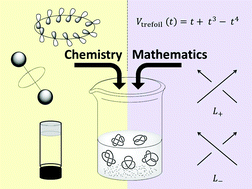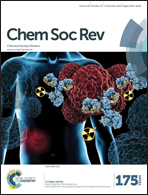Knot theory in modern chemistry
Abstract
Knot theory is a branch of pure mathematics, but it is increasingly being applied in a variety of sciences. Knots appear in chemistry, not only in synthetic molecular design, but also in an array of materials and media, including some not traditionally associated with knots. Mathematics and chemistry can now be used synergistically to identify, characterise and create knots, as well as to understand and predict their physical properties. This tutorial review provides a brief introduction to the mathematics of knots and related topological concepts in the context of the chemical sciences. We then survey the broad range of applications of the theory to contemporary research in the field.



 Please wait while we load your content...
Please wait while we load your content...